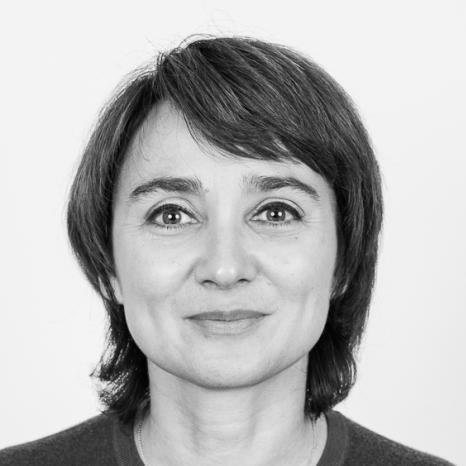Maison de l'économie et de la gestion d'Aix
424 chemin du viaduc, CS80429
13097 Aix-en-Provence Cedex 2
- People
- Fabre
Fabre
Alice Fabre


MEGA
Publications
We argue that market forces shaped the geographic distribution of upper-tail human capital across Europe during the Middle Ages, and contributed to bolstering universities at the dawn of the Humanistic and Scientific Revolutions. We build a unique database of thousands of scholars from university sources covering all of Europe, construct an index of their ability, and map the academic market in the medieval and early modern periods. We show that scholars tended to concentrate in the best universities (agglomeration), that better scholars were more sensitive to the quality of the university (positive sorting) and migrated over greater distances (positive selection). Agglomeration, selection, and sorting patterns testify to an integrated academic market, made possible by the use of a common language (Latin).
What does the American movie industry tell us about the economic role of Wall Street and the perception of the stock market over time? Through a substantial corpus of American films from the 20c. and 21c, this article illustrates how, in three distinct periods, Hollywood has been able to stage finance and contribute to the myth of Wall Street. A minor subject until the 1980s, these years have seen the appearance of financial blockbusters with the rise of the financialization of the economy. The subprime crisis renews the genre, questioning the place of the stock market and the ethics of traders.
Dans cet article, nous construisons une base de données prosopographique de 476 savants et érudits ayant participé à l’enseignement à Aix-en-Provence sous l’Ancien régime. Nous couvrons ainsi l’ancienne université d’Aix (1409-1793), les écoles qui l’ont précédée (-1409) et le collège Royal Bourbon (1603-1763). L’analyse des données récoltées permet d’appréhender la démographie de cette population (longévité, mobilité). En outre, l’analyse de la notoriété de ces personnes met en avant un âge d’or au début du XVIIème siècle avec Pierre Gassendi, Charles-Hannibal Fabrot, et, au travers d’un lien plus lâche avec l’université, Nicolas Fabri de Peiresc. Nous montrons aussi l’absence d’un déclin franc en termes notoriété dans la période subséquente (1650-1793). Ce résultat contredit partiellement la vision selon laquelle les universités étaient devenues caduques à la fin de la période moderne, et souligne l’importance de s’intéresser au corps professoral des anciennes universités.
[fre] L’étude porte sur la mobilité intergénérationnelle en France sur la période 1945-1993 et met l’accent sur le rôle de la dotation en capital humain de l’économie. A l’aide d’un modèle à générations imbriquées avec agents hétérogènes, nous montrons que la présence d’effets d’entraînement, liés au capital humain moyen de l’économie, permet de réduire l’inégalité en capital humain, même dans le cas d’une croissance endogène à taux constant. Le modèle théorique apporte des éléments d’explication de l’élévation du niveau de scolarisation observée en France au cours des dernières décennies. Des estimations réalisées à partir de données issues de l’enquête Formation et Qualification Professionnelle 1993 de l’INSEE montrent ainsi que le capital humain moyen de l’économie joue un rôle significatif sur l’accumulation du capital humain et contribue à la mobilité intergénérationnelle, en dépit d’un coefficient de transmission du capital humain élevé entre générations. [eng] This study deals with intergenerational mobility in France over the period 1945-1993 , highlighting the role of the economy ’ s human capital endowment . Using an overlapping-generations interwoven-generations model with heterogeneous agents , we show that the presence of diffusion effects , linked to the economy ’ s average human capital , makes it possible to reduce inequality in human capital , even in the case of endogenous constant-rate growth. The theoretical model provides certain elements helping to explain the increase in the level of school enrolment seen in France in recent decades . Estimates on the basis of data provided by INSEE ’ s “ Formation et Qualification Professionnelle ” (Training and Professional Skills ) survey for 1993 show that the economy ’ s average human capital plays a significant role in the accumulation of human capital and contributes to intergenerational mobility , despite a high coefficient for the transmission of human capital between generations .
This paper provides an overlapping generations model with both physical and human capital, in order to study the link between heterogeneity and growth. The study stresses out the flexibility of the OLG model to analyse the mutual dependence between the human capital distribution and the dynamics of the economy. It is assumed there exists an externality taking into account the effects of the average human capital dotation. Contrary to Lucas [1988], the external effects are present in the individual accumulation function of human capital, and not in the output function. Due to this specification, the model exhibits spillover effects that generate convergence, even in the case of endogeneous growth. Besides, it is shown that the dynamic equilibrium depends upon the initial heterogeneity of human capital. JEL classification : 015, J24
L’étude porte sur l’impact de la nature d’une formation continue sur la croissance. Nous considérons un modèle à générations imbriquées, au sein duquel les agents vivent deux périodes. En première période de vie, ils s’éduquent au sein d’un système scolaire, puis en seconde période, ils ont la possibilité de suivre une formation continue alors qu’ils sont entrés dans la vie active. Nous montrons que le fait de pouvoir se former aussi en seconde période de vie influence les comportements d’éducation et affecte positivement l’équilibre de long terme. L’impact dynamique de la formation continue doit cependant être nuancé selon que la formation est spécifique ou générale, une formation générale apparaissant comme plus favorable à la croissance.







